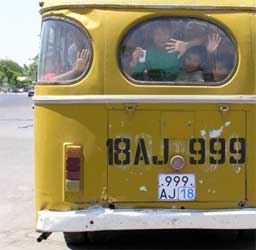The rapid and often unplanned and uncoordinated growth of cities has seriously compromised existing transportation systems and significantly increased the challenge of creating future transportation systems especially in developing countries. It is indeed in developing countries that the greatest growth in motor vehicles has been seen in the past few years and is expected in the future, primarily in urban areas. The environmental and social impacts are significant and directly related to quality of life and urban productivity. These impacts include congestion, energy consumption, air pollution, and traffic crashes. Thus, urban transportation issues are of foremost importance to support the mobility requirements in these growing cities and require new approaches.
However, urban transport is a political rather than a technical issue. The technical aspects are relatively simple. The difficult decisions relate to the type of city we want and the way we want to live. Who is going to benefit from the models adopted? Do we dare to create a transport model different from that of the so-called advanced world cities? Do we dare create a transport system giving priority to the needs of the low-income majority rather than the automobile owning minority? Are we trying to find the most efficient, economical way to move a city’s population, as cleanly and as comfortable as possible? Or are we just trying to minimize the upper class’s traffic jams?
Satrapia aims to formulate and implement appropriate policies that contribute to sustainability in urban transport in his college town. It projects an analysis of the important issues of sustainable transport including transport demand management, improved public and non-motorized transport, environmental protection, road safety, and gender in transport. In order to achieve sustainability, it also envisages some means such as economic and financial instruments, institutional improvements, capacity building, regulation of markets and environmental standards.
Actions:
- Analyze the deficit of conventional transport approaches with respect to sustainability and apply alternative and integrated approaches for transport planning
- Design non motorized transport infrastructures that contribute to pro-low-income mobility systems
- Recommend appropriate planning and regulation measures to accommodate for sustainable and safe walking and cycling
- Plan and implement Intelligent Transport Systems
- Plan and regulate bus systems
- Conduct planning process for Bus Rapid Transit Systems
- Recommend institutional frameworks for the development of integrated regional transport and land-use plans
- Recommend measures to organize institutions in the road and Public Transport sector
- Recommend institutional, legal and regulatory framework for PPP transport projects
- Recommend measures to control transport emissions
- Propose abatement measures to reduce transport noise
- Design measures to improve transport safety
- Formulate planning and design measures to improve the situation of women in urban transport

